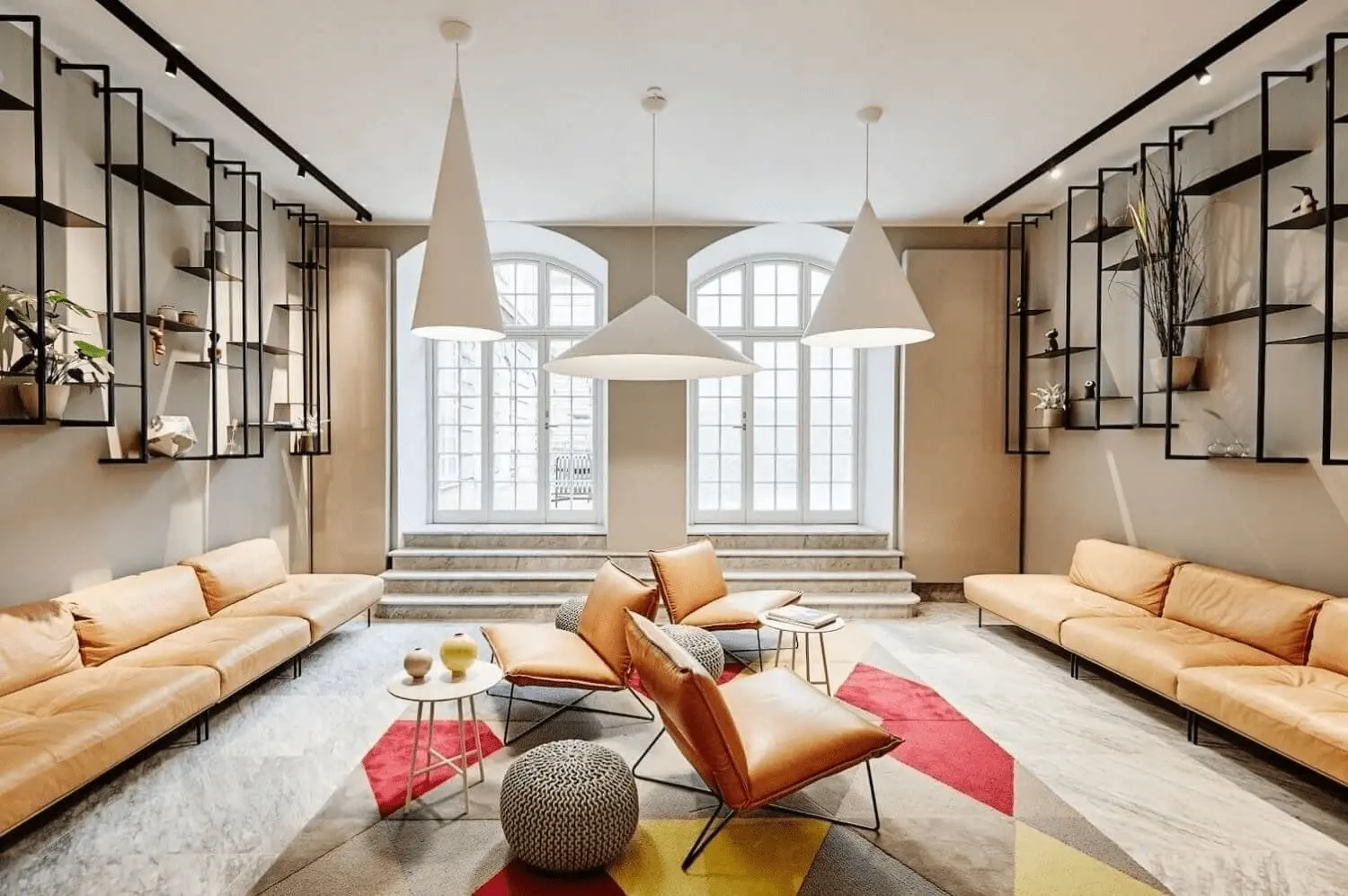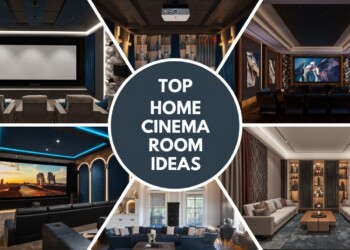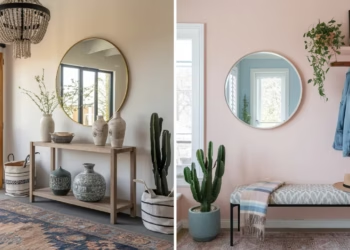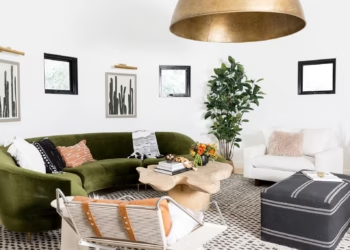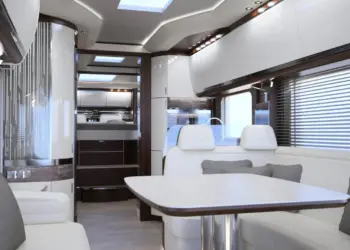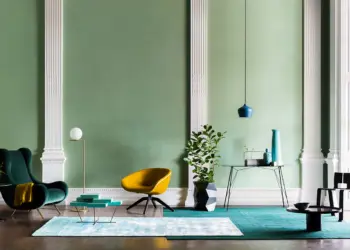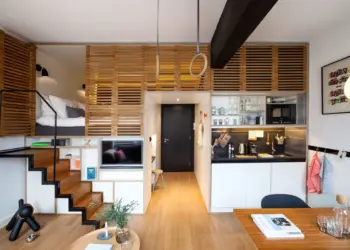Rhythm is not just confined to the world of music and dance; it is a fundamental principle that plays a crucial role in the realm of interior design. It serves as the guiding force that orchestrates a harmonious flow and visual continuity within a space. By incorporating rhythm effectively, one can create a cohesive and aesthetically pleasing environment that exudes a sense of balance and order. In this comprehensive guide, we will delve into the intricacies of establishing rhythm in interior design and uncover the key elements that contribute to its successful implementation.
Table of Contents
Rhythm in interior design
Rhythm is an essential concept in interior design that entails creating a sense of visual movement and harmony within a space. It involves the careful arrangement of design elements to establish a cohesive and engaging environment. Whether it’s through the strategic placement of furniture, the use of patterns, or the manipulation of lighting, rhythm can significantly impact the overall ambiance and aesthetic appeal of a room. Understanding the nuances of rhythm and learning how to wield its power effectively can elevate the design of any interior space.
Understanding Rhythm
In the context of interior design, rhythm refers to the repetition or recurrence of visual patterns, forms, colors, or textures within a space. It is the careful orchestration of these recurring elements that generates a sense of organized movement and continuity. By establishing rhythm, designers can guide the observer’s eye through a space, creating a natural flow and enhancing the overall visual experience.
The Concept of Rhythm
Rhythm is not a singular element but a complex interplay of various design components that work together to create a harmonious whole. It can be achieved through a variety of techniques, such as the use of consistent patterns, the arrangement of furniture, the application of complementary color schemes, and the integration of lighting techniques. By understanding the fundamental concept of rhythm, designers can manipulate these elements to create a specific mood or atmosphere within a room.
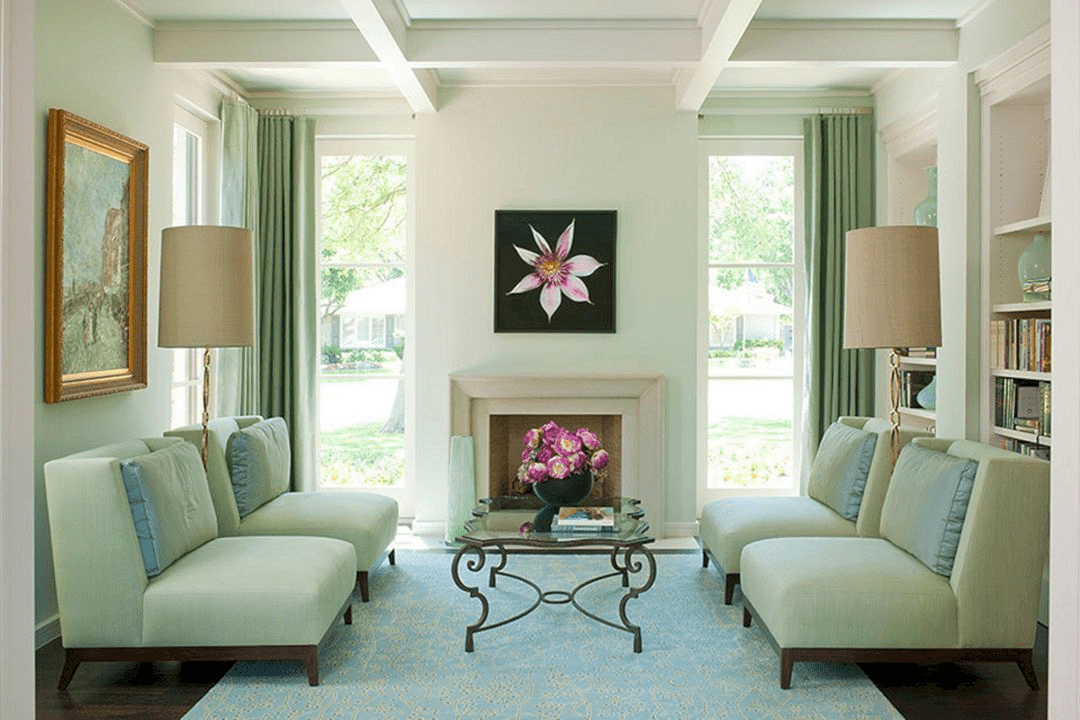
Types of Rhythm
In interior design, various types of rhythm can be employed to achieve different visual effects and evoke specific emotions. These types include:
1.rhythm in interior design: Repetitive Rhythm
The repetitive rhythm involves the consistent use of the same design elements throughout a space. This repetition can create a sense of unity and cohesiveness, providing a calming and organized visual experience for the observer.
2. rhythm in interior design: Progressive Rhythm
Progressive rhythm involves the gradual alteration of a design element, either in size, shape, or color. This type of rhythm can create a dynamic and energetic ambiance, drawing the observer’s eye along a visual path and creating a sense of movement within the space.

3. rhythm in interior design: Transition Rhythm
Transition rhythm focuses on the smooth and gradual progression from one design element to another. It involves the careful integration of diverse elements, creating a seamless and fluid transition that ensures a visually pleasing and balanced environment.
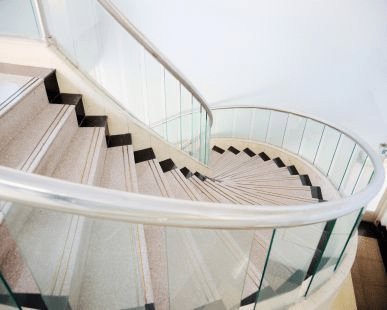
4.rhythm in interior design: Contrasting Rhythm
Contrasting rhythm relies on the juxtaposition of disparate design elements to create a sense of visual interest and excitement. By incorporating contrasting colors, textures, or forms, designers can establish a bold and dynamic atmosphere that captures the observer’s attention and creates a memorable experience.
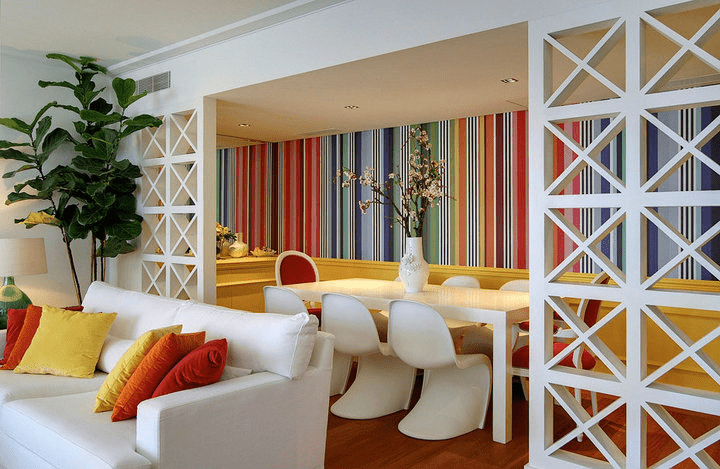
Creating Visual Interest
Establishing rhythm in interior design is an effective way to create visual interest and engage the observer on a deeper level. By incorporating diverse rhythmic elements, designers can evoke specific emotions and set the tone for the entire space. From the careful selection of furniture to the thoughtful arrangement of accessories, each design choice contributes to the overall rhythm and ambiance of the room.
Furniture and Layout
The selection and arrangement of furniture play a vital role in establishing the rhythm of a room. By considering the scale, proportion, and placement of furniture pieces, designers can create a balanced and harmonious environment that promotes a seamless flow and effortless movement.
Patterns and Textures
Incorporating patterns and textures is an effective way to introduce rhythm into a space. Whether through the use of wallpapers, textiles, or flooring, designers can leverage various patterns and textures to create a sense of rhythm and visual depth, adding layers of interest and complexity to the overall design.
Color Schemes
The strategic use of color schemes can significantly contribute to the establishment of rhythm within a room. By carefully selecting complementary or contrasting colors, designers can create a dynamic and visually stimulating environment that captures the observer’s attention and creates a lasting impression.
Lighting Techniques
Lighting plays a crucial role in emphasizing the rhythm of a space. By utilizing different lighting techniques, such as accent lighting, ambient lighting, or task lighting, designers can highlight specific design elements, create visual focal points, and establish a sense of rhythm that enhances the overall ambiance and atmosphere of the room.
Accent Pieces and Accessories
Incorporating accent pieces and accessories is an effective way to infuse personality and character into a space. By selecting unique and visually engaging accessories, designers can introduce rhythm and create points of interest that draw the observer’s eye and contribute to the overall visual narrative of the room.
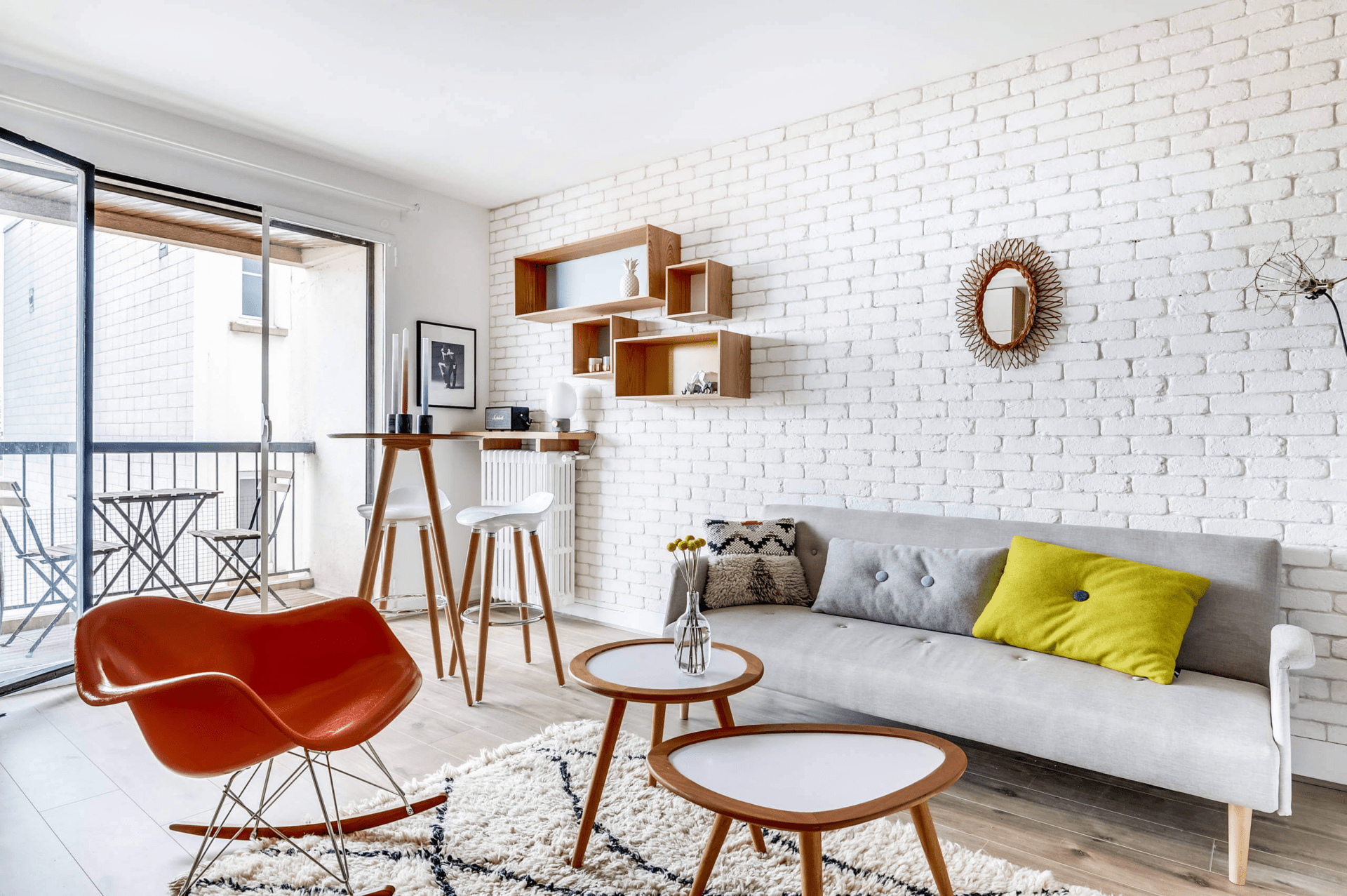
In the realm of interior design, establishing rhythm is a critical aspect that significantly impacts the overall aesthetic appeal and functionality of a space. By understanding the fundamental principles of rhythm and learning how to leverage its power effectively, designers can create visually engaging and harmonious environments that promote a sense of balance and coherence. Through the careful integration of diverse design elements, such as furniture, patterns, colors, and lighting, designers can orchestrate a visual symphony that captivates the observer and fosters a deep appreciation for the art of interior design.
FAQs
What is the design of rhythm?
The design of rhythm refers to the intentional arrangement and repetition of visual elements, establishing a sense of order and coherence within a design composition. It ensures a harmonious and balanced visual experience for the viewer.
How can I create a sense of rhythm without overwhelming the space?
To create a sense of rhythm without overwhelming the space, consider incorporating subtle and consistent design elements that seamlessly blend with the overall aesthetic of the room. Focus on maintaining a balance between repetition and variation to ensure a harmonious and visually appealing environment.
What role does symmetry play in establishing rhythm in interior design?
Symmetry can play a significant role in establishing rhythm, especially in more formal and traditional design styles. By incorporating symmetrical elements, designers can create a sense of order and balance that promotes a visually pleasing and organized environment.
How can I use accent lighting to enhance the rhythmic elements in a room?
Accent lighting can be used to highlight specific design elements and create visual focal points within a space. By strategically placing accent lighting fixtures, such as wall sconces or pendant lights, designers can draw attention to key architectural features or decorative elements, effectively enhancing the rhythmic flow of the room.
What are some common mistakes to avoid when establishing rhythm in interior design?
Some common mistakes to avoid when establishing rhythm in interior design include overloading the space with excessive patterns or textures, neglecting the importance of lighting, and disregarding the overall balance and flow of the room. It is crucial to strike a harmonious balance between various design elements to create a cohesive and visually engaging environment.
How can I incorporate transitional elements to create a smooth rhythmic flow within a space?
To incorporate transitional elements effectively, consider using gradual changes in color, texture, or form to create a seamless and fluid transition between different design elements. Focus on maintaining a consistent visual narrative that guides the observer’s eye through the space, ensuring a harmonious and visually appealing experience.
Why is rhythm important in design?
Rhythm is crucial in design as it creates a sense of movement and visual interest, guiding the viewer’s eye through a composition and establishing a harmonious flow within a space.
What are the 4 types of rhythm in design?
The four types of rhythm in design include regular, alternating, flow, and progressive rhythms, each contributing to the overall visual dynamics and balance of a design.
What is rhythm in design with example?
In design, rhythm is exemplified through the repetition of visual elements, such as shapes, colors, or patterns, creating a sense of pattern and movement. For instance, the use of alternating light and dark tiles in a checkerboard pattern on a floor exhibits a regular rhythm.
